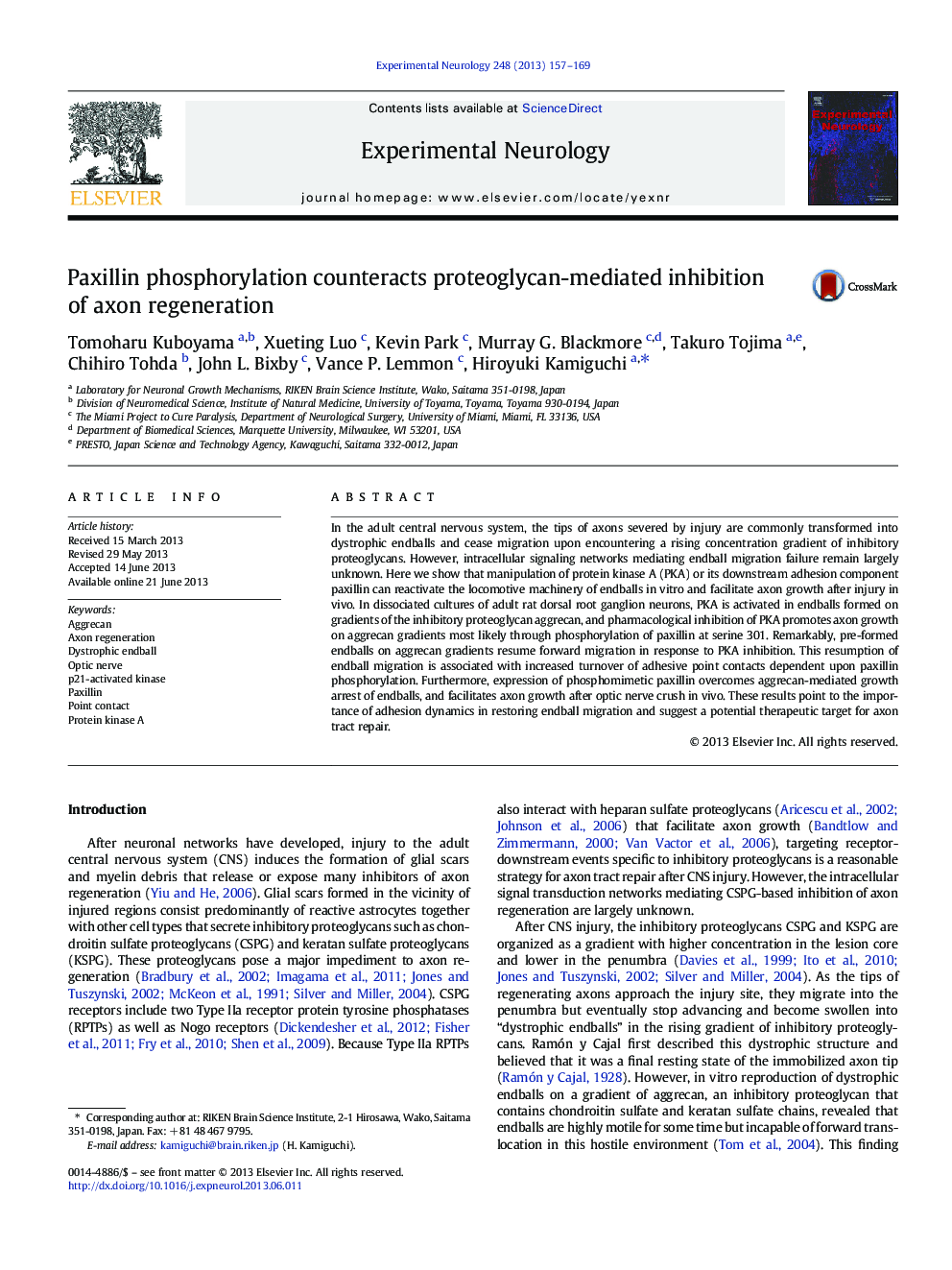| Article ID | Journal | Published Year | Pages | File Type |
|---|---|---|---|---|
| 6018058 | Experimental Neurology | 2013 | 13 Pages |
â¢Inhibitory proteoglycan gradients cause PKA activation in dystrophic endballs.â¢PKA inhibition restores the growth capability of dystrophic endballs.â¢Endballs resume forward migration possibly through increased adhesion dynamics.â¢Serine phosphorylation on paxillin mediates resumption of endball migration.â¢Paxillin phosphorylation promotes axon growth in the injured CNS.
In the adult central nervous system, the tips of axons severed by injury are commonly transformed into dystrophic endballs and cease migration upon encountering a rising concentration gradient of inhibitory proteoglycans. However, intracellular signaling networks mediating endball migration failure remain largely unknown. Here we show that manipulation of protein kinase A (PKA) or its downstream adhesion component paxillin can reactivate the locomotive machinery of endballs in vitro and facilitate axon growth after injury in vivo. In dissociated cultures of adult rat dorsal root ganglion neurons, PKA is activated in endballs formed on gradients of the inhibitory proteoglycan aggrecan, and pharmacological inhibition of PKA promotes axon growth on aggrecan gradients most likely through phosphorylation of paxillin at serine 301. Remarkably, pre-formed endballs on aggrecan gradients resume forward migration in response to PKA inhibition. This resumption of endball migration is associated with increased turnover of adhesive point contacts dependent upon paxillin phosphorylation. Furthermore, expression of phosphomimetic paxillin overcomes aggrecan-mediated growth arrest of endballs, and facilitates axon growth after optic nerve crush in vivo. These results point to the importance of adhesion dynamics in restoring endball migration and suggest a potential therapeutic target for axon tract repair.
